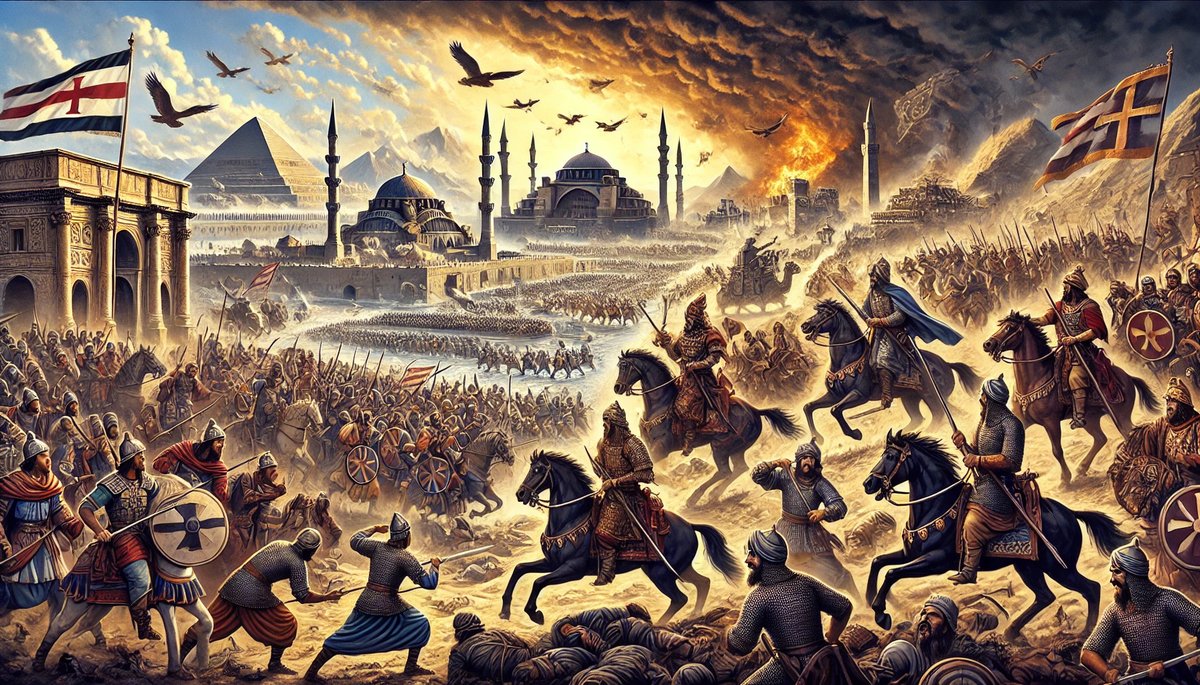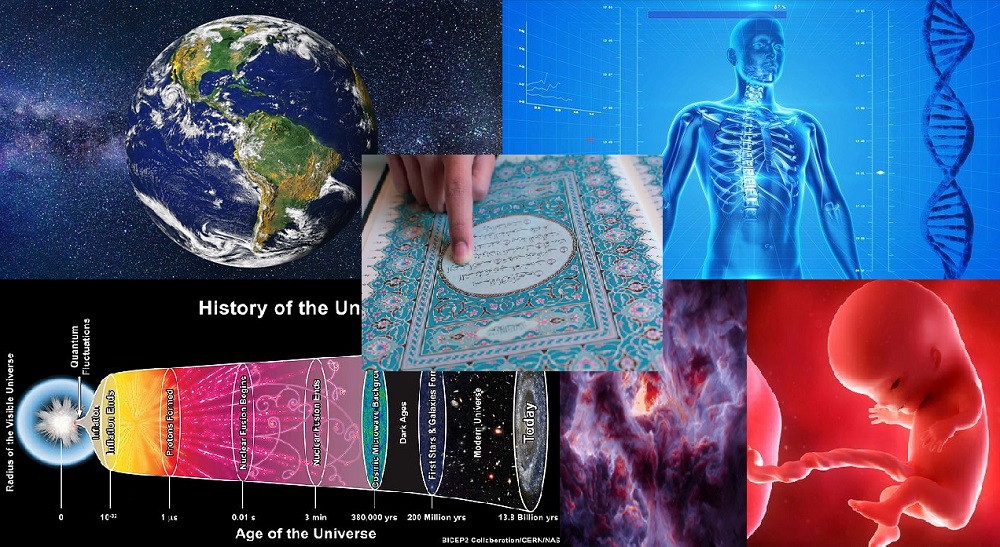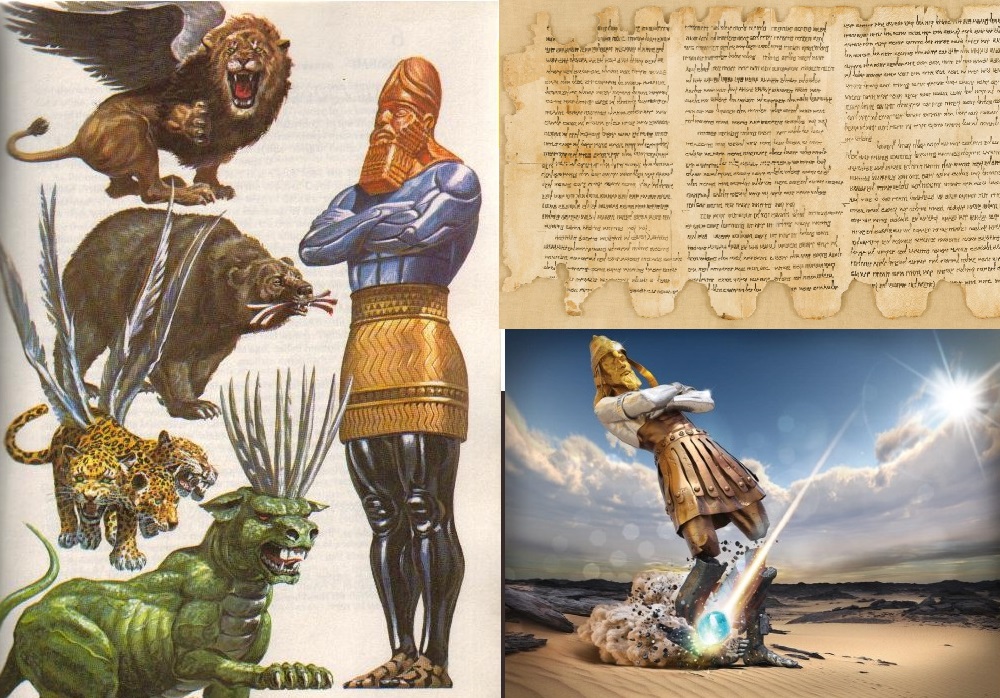The material miracles of Prophet Muhammad

Belief in Muhammad(ﷺ) ‘s prophethood does not solely depend on his performance of miracles. However, the historically reliable accounts of these miracles make their occurrence undeniable and enhance our admiration and awe of the Creator.
This article will explore some of the most authentically transmitted miracles of Prophet Muhammad (ﷺ). It will evaluate the utility, plausibility, and provability of these miracles, providing insights into how they support the broader understanding of his message and mission.
About Miracles
The mission of Prophet Muhammad (ﷺ) was indeed supported by physical miracles, which were observed and reported by a generation known for its exceptional moral integrity.
While the Quran is recognized as the Prophet’s greatest miracle and certainly stands alone as a miraculous sign, it’s important to note that God’s generosity extended many other miraculous events to mankind through Muhammad (ﷺ).
Some have argued that the QQurandenies any miracles attributed to Prophet Muhammad (ﷺ) other than the QuQurantself, but this interpretation is incorrect.
A careful examination of the relevant passages indicates that they pertain to one of three distinct situations:
- God’s Refusal to Grant Specific Miracles: This occurs in response to the defiance of the people who demanded signs as a condition of their belief.
- Criticism of pride: These passages criticize those who felt entitled to demand a miracle from God as proof of His messenger’s legitimacy.
- Overlooking the Miracle of the Quran: this is especially relevant when considering that no one was better positioned to recognize its miraculous nature than the polytheists of Arabia, who were deeply familiar with the language and poetry of the time yet could not replicate its eloquence.
These contexts help clarify misunderstandings about the role of miracles in the life and prophethood of Muhammad (ﷺ).
Why miracles?
Miracles are one of the many paths to conviction.
Miracles serve as one of many pathways to conviction. While the message of Islam, along with the character and achievements of Prophet Muhammad (ﷺ), substantiates the truth of his prophecy, the role of miracles in strengthening belief should not be overlooked. For some, witnessing miracles may be the initial factor that ignites their faith, aligning with their intellectual orientation and pathway to belief.
Over time, however, believers are encouraged to attain higher levels of certainty through reflection, knowledge-seeking, and heart purification. This deeper engagement allows them to witness the truth of Islam through its message directly.
Ibn al-Qayyim (d. 1350) reflects on this diversity in the paths to guidance, attributing it to God’s mercy and kindness, which accommodate the varied intellectual, mental, and spiritual perspectives of His servants. He states in Miftāh Dār as-Sa’āda:
“The paths of guidance are diverse, like God’s mercy and kindness to His servants, due to the variation in their intellectual, mental and spiritual perspectives.”
Ibn al-Qayyim al-Jawziyya, Miftāh Dār as-Sa‘āda
Ibn al-Qayyim provided examples to illustrate these diverse paths:
- Recognition of Truth in the Message Itself: Some, like Abu Bakr aṣ-Ṣiddīq (رضي الله عنه), are guided by the inherent truth of the message, due to the purity of their nature.
- Impeccable Character of Its Bearer (ﷺ): Others, like Khadīja b. Khuwaylid (رضي الله عنها) recognized the truth through the exemplary character of Prophet Muhammad (ﷺ).
- Witnessing Miracles: A third segment found belief in God through the observation of miracles performed by the Prophet (ﷺ).
- Triumphs and Successes: A fourth group was convinced by the victories and achievements in the PProphet’slife.
- Inherited Faith: A fifth group came to faith through association and tradition.
These examples emphasize that faith may come through different experiences and insights tailored to individual dispositions and circumstances.
Miracles inspire believers
Miracles not only bring some people to faith but also strengthen the existing faith of believers by inspiring immense love, respect, and admiration for Prophet Muhammad (ﷺ). These accounts of divine intervention reflect on God’s mercy and support, providing the faithful with firm confidence in Divine Providence, especially during times of distress and difficulty.
Engaging with these miraculous stories allows individuals to comprehend the reality of divine omnipotence, encouraging them to dream big, challenge their limits, and shed self-limiting beliefs. It reveals that the natural order, which may seem fixed, is actually entirely subject to Divine Will.
Miracles are futile for minds corrupted by illogical skepticism
As for those who are only interested in validating their prejudices, the Qur’Quranelf states that miracles are in vain for those who don’t want to believe in them, even if they were eyewitnesses. Allah (Most High) says:
The Quran repeatedly describes this inevitable response to miracles from skeptical minds throughout the ages and explains why some still rejected Islam after witnessing the Prophet’ss miracles themselves.
This demonstrates the truth of a key epistemological perspective that the Quran postulates—namely, the futility of skepticism as an approach to knowledge. Even the clearest signs and miracles can be doubted if a person is prepared to be skeptical of their own senses and question reality entirely.
However, because our postmodern age views religion, and in particular the supernatural, with more suspicion than any other period in human history, let’s start by dispelling common misconceptions that miracles are either logically impossible or historically unprovable.
Are miracles possible?

The Creator of the laws of the universe is capable of breaking them
Most people believe that God is the Creator of the universe and remains a willing agent in the world; therefore, God’s ability to perform miracles – or to enable others to perform them – is easy for them to accept.
After all, if God created the laws of nature, it logically follows that He is not bound by the system He designed. But He can also bring about events outside that system.
Miracles are problematic only for atheists (who believe in no God) and deists (who postulate a non-intervening God). Both categories will find it refreshing to familiarize themselves with the evidence for Allah’s existence in reason, science, and the Quran.
The arguments against miracles
The rapid developments leading up to the European Enlightenment sparked a strong aversion among many Westerners to the idea of miraculous intervention.
These skeptics typically dismiss miracles, arguing that established scientific truths prove that the natural order of the universe can’t be altered “by magic.”
Two of the most prominent figures in this philosophy against non-scientific miracles were Dutch rationalist Baruch Spinoza, who died in 1677, and Scottish empiricist David Hume, who died in 1776. Both philosophers presented various arguments against the possibility of miracles. However, upon closer examination, their arguments often show factual errors and logical inconsistencies or fail to apply to the miracles attributed to Prophet Muhammad (ﷺ).
Spinoza’s argument: “Humans simply haven’t understood it yet”.
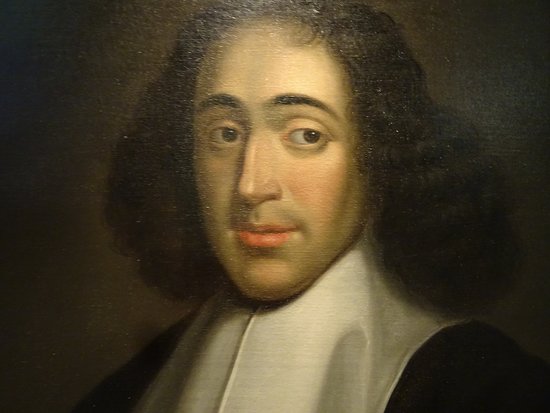
In his book Traité théologico-politique, Spinoza argues that belief in miracles is simply a relic of the naive premodern mind, which lacked the ability to interpret natural phenomena correctly and misunderstood the intended meaning of Torah passages.
However, Spinoza’s fervent effort to disprove the possibility of miracles often missed the mark. For instance, he tried to explain every explicit biblical account of miracles as either hallucinations or interpolations. He also strangely claimed that every supposed miracle was just a misunderstood natural phenomenon. While it’s true that ignorance and superstition once led people to mislabel certain events as miracles, there’s no scientific evidence that supports transformations like sticks into snakes (as with Moses), restoring sight to those born blind (as with Jesus), or splitting the moon (as with Muhammad(ﷺ) ﷺ).
Spinoza maintained that since our understanding of nature is incomplete, we cannot declare any event as miraculous; it might have an unknown natural explanation. He believed that unexplained events should compel us to rethink our understanding of natural laws. However, the modern philosophy of science considers this approach flawed; the fundamental laws of nature are not just provisional hypotheses waiting to be updated with new data.
A crucial aspect of the scientific method is reproducibility; if the same conditions do not consistently reproduce the same event, it does not necessarily lead to a revision of scientific laws. Moreover, miracles are phenomena with a clearly supernatural origin that distinctively break from the natural order; thus, they do not necessitate a revision of our understanding of natural laws. For example, a bird being miraculously brought back to life from a dismantled carcass (as with Abraham) does not mean we need to rethink our knowledge of how bodies decompose.
Spinoza and the Nature God

In addition to his epistemological objections to miracles, Spinoza also raised a quasi-theological and ontological argument:
“If someone were to assert that God acts in violation of the laws of nature, he would ipso facto be obliged to assert that God has acted against his own nature.” (Baruch Spinoza, A Theological-Political Treatise, Dover Philosophical Classics (2004), Chapter VI, p. 83.)
This argument hinges on accepting Spinoza’s rather limited conception of God. Spinoza equated God with nature itself, a perspective so restrictive that it verges on atheism for many. From this viewpoint, it indeed appears illogical for nature to contradict itself. However, this view starkly contrasts with theistic understanding of God as an omnipotent and transcendent being. In such frameworks, God is the Supreme Master of all existence, who can simply command “Be,” and it is. Therefore, from this perspective, there’s no rational contradiction in God intervening in His creation or temporarily suspending natural laws. This capacity for divine intervention underpins the concept of miracles in many religious traditions, where such events are seen not as contradictions or violations of the divine nature but as expressions of God’s supreme authority over all creation.
Spinoza and the imperfect world
Spinoza also contends that if miracles were true, they would suggest that God created an imperfect world that He needs to keep fixing. This idea not only contradicts his belief that humans simply haven’t fully understood the natural world yet, but it also involves a straw man fallacy—misrepresenting the position held by believers. Believers do not see miracles as fixes to a flawed world. Instead, they view them as demonstrations that the pProphet’ssender is the same Creator who established the world and its laws and who can momentarily suspend these laws to manifest His power.
Hume and empirical observation
The limitations of Spinoza’s critique became evident, and it wasn’t until Hume published his Enquiry into Human Understanding that debates over the logical and scientific possibility of miracles truly intensified. Enlightenment paradigms such as skepticism and naturalism were conducive to the wider acceptance of his views.
Hume argued that we must dismiss even the strongest testimony of any supernatural event, as it would inherently contradict the established laws of nature.
This stance is rooted in Hume’s worldview, which leaned towards agnosticism or atheism. Theists, however, view miracles much like natural phenomena: both are initiated by God. Just as the universe was created at God’s command and operates under His laws, miracles, too, can occur by His will.
For theists, the occurrence of miracles is seen as an extension of divine reality. Just as God’s existence and grandeur are shown through the consistent laws of nature, His omnipotence and the authenticity of His messengers are demonstrated when He occasionally alters those laws in extraordinary ways. The “laws of nature” are not rigid rules but descriptions of how we typically observe the world to function.
Thus, miracles are not contradictions but exceptions to the usual natural order. This perspective shifts the debate from questioning the logical possibility of miracles to examining their historical authenticity, moving beyond Hume’s notion of incompatibility.
What is the proof that miracles have taken place?
Unless I’ve seen it myself
Neither the logical possibility of an omnipotent God performing miracles nor the simple historical claim of their occurrence proves that miracles have actually happened.
Compelling evidence is required, and no reasonable person would consider accounts of miracles without thorough scrutiny; as it is often said, “extraordinary claims require extraordinary evidence.”
However, we must determine whether we are truly open to evidence—however extraordinary—or blindly attached to our presuppositions.
Consistency is an excellent litmus test; ask yourself if you apply the same stringent standards to all similar beliefs about life and faith or if a double standard exists due to bias or extreme skepticism. Many may not realize they are, in essence, dogmatic naturalists who think no amount of historical evidence for miracles is sufficient and that only personal experiences are valid.
While the direct experience of the miraculous Quran is the next topic in this post, consistency means acknowledging that no one truly adheres to the “unless I’ve seen it myself” rule. Adhering to such a rule would mean rejecting all maps we haven’t drawn ourselves and all scientific facts we haven’t personally verified.
Rational and balanced individuals recognize that testimonies, their traceability, and corroboration are valid evidence to confirm that an event or fact is certainly true or likely true.
The chain of transmission of hadith narrations
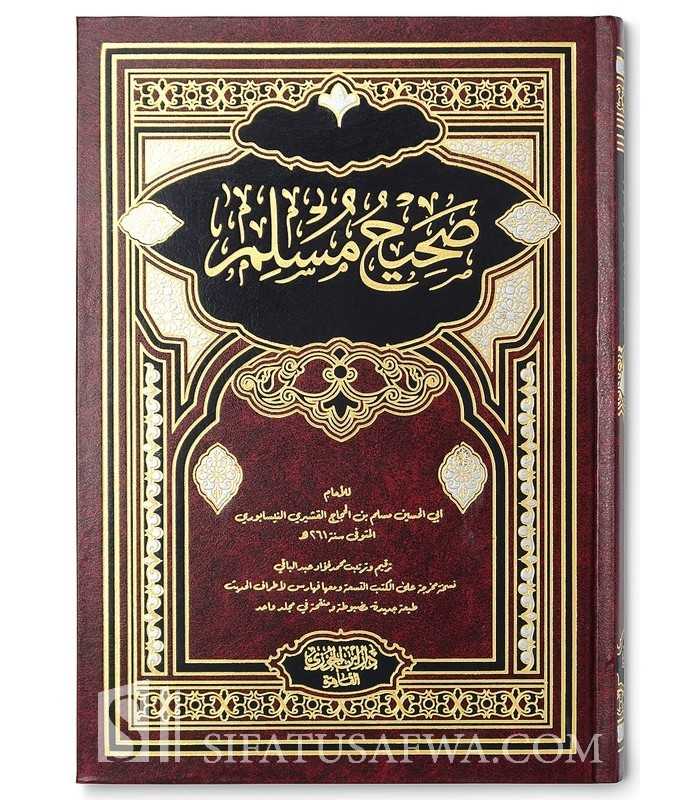
The discipline of Hadith is an instrumental science in the Islamic intellectual tradition, invested in verifying reports about the Prophet Muhammad (ﷺ) ﷺ, and therefore at the heart of any discussion of miracles.
It’s a uniquely sophisticated process involving the interaction of seven sub-disciplines, all designed to satisfy an inflexible requirement of traceability for every narrative. Ultimately, a tiny fraction of these transmitted narrations survive the rigorous mechanism to receive the “authentic” classification, but Hadith scholars have not stopped there. Authentic narrations have been stratified into mutawātir (abundantly recurring) and aḥād (solitary). Mutawātir reports are those told by a large number of narrators in each layer of their transmission, making it inconceivable that they all got it wrong or all agreed on a forgery. Aḥād reports – when authentic – are those reliably transmitted but without meeting the criteria of mutawātir; therefore, most Hadith scholars believe they confer preponderance (greater probability) as opposed to certain knowledge.
However, this majority simultaneously deems all reports more worthy of acceptance than rejection due to the reliability of their chains of transmission and the fact that all sensible people act with greater probability in the absence of certainty.
Mutawātir concept
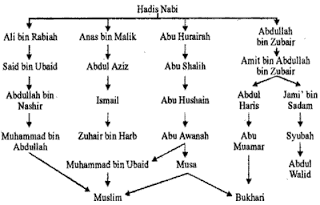
Miracles occurring at the hands of the Prophet Muhammad (ﷺ) ﷺ is a mutawātir concept, meaning that the multitude of reports makes it unquestionable in principle, even if some of its specific accounts are not independently mutawātir.
The occurrence of the First World War is a simple example of a mutawātir concept. Rejecting a mutawātir concept would be tantamount to refusing to confirm that Mayan, Incan, or Aztec civilizations existed until humans invented a time machine and traveled to their time. Until then, this person would be willing to consider the possibility that it was all an oversight or a transhistorical conspiracy – similar to what the Flat Earth Society advocates today.
Islam, therefore, requires a demonstrable chain of command before attributing a statement or action (such as a miracle) to its Prophet, unlike many religions whose miracle stories are believed only by supporters of blind faith. Muslim theologians often point out this important distinction and how it obliges every honest person not to differentiate between the miracles of the Prophet Moses and Jesus because of their comparable historicity and to accept the miracles of the Prophet Muhammad(ﷺ) first since their historicity is much stronger.
After citing the miracles of Moses and Jesus, peace be upon them. How people believe in their miracles today even though they happened in very ancient times and their nations were fragmented in the world, Ibn al-Qayyim says in Ighāthat al-Lahfān:
“What then is to be thought of the prophethood of him whose miracles exceed a thousand miracles and are much more recent, were transmitted by the purest and most honorable individuals of all time, and that this transmission was transmitted by tawātur (abundant recurrence) one century after another?”
Ibn al-Qayyim al-Jawziyya, Ighāthat al-Lahfān, Maktabat al-Ma’ārif, Riyadh (1975), 2/347
Muhammad(ﷺ) ﷺ would also be the most authoritative confirmer of the miracles of the previous prophets and the most qualified to put an end to the controversies surrounding them.
Miracles of the Prophet
THE SCISSION OF THE MOON

One of the Prophet Muhammad(ﷺ) ‘s greatest miracles, it is mentioned in the Quran :
This miracle was also repeated in several authentic traditions of the Prophet.
In the end, the idolaters of Quraysh chose denial, and because no one could deny seeing the moon separate, they were forced to deny their own eyes.
Many Hadith luminaries have independently verified the mutawātir quality report of this miraculous event by exploring its narrators from each transmission layer. This was done by as-Subki in Sharḥ Mukhtasar Ibn al-Ḥājib, Ibn Ḥajar in al-Amāli, al-Qurṭubi in al-Mufhim, Ibn Kathīr in al-Bidāya wan-Nihāya, Imam al-Munāwi in Sharḥ Alfiyat al-‘ Irāqi and Ibn’ Abdil-Barr, among others. [Muhammad al-Kattāni, Naẓm al-Mutanāthir min al-Ḥadith al-Mutawātir, Dār al-Kutub al-Salafiyya, no. 264].
In addition to presenting numerous reports of the moon’s separation, Ibn Kathīr (d. 1373) draws our attention to a key aspect of this incident:
“When the moon divided, it never left the sky, rather it cleaved once the Prophet” beckoned to it. and became two pieces. He [only] continued to hover behind Mount Ḥirā ‘, placing the mountain between itself and its counterpart, as described by Ibn Mas’ūd who reports witnessing this himself.”
Ismā’īl b. Kathīr, al-Bidāya wan-Nihāya 4/303
Imam al-Khaṭṭābi (d. 988) similarly said
Ibn Ḥajar al-‘Asqalāni, Fatḥ al-Bāri, 7/185
The separation of the moon was a great sign to which no miracle of any other prophet could be compared, for it was something that appeared in the distant sky and was contrary to all the naturally existing phenomena of which this world is composed. It therefore went beyond what anyone could hope to achieve by trickery, making its evidential value even more obvious.
Reply to objections
Objection 1: No trace of the moon scion is discernible
One of the strange objections raised about this incident is the belief that a supernatural event should produce scientifically measurable after-effects, such as a gravitational disturbance or geological traces on the moon’s surface. However, this belief is flawed.
The division of the moon is a miraculous phenomenon, transcending the natural order. We don’t know why we should expect a supernatural event to have natural effects. Miracles are always intended for those who witness them directly. It is certainly within the power of the Omnipotent God to saw through an astronomical object while suspending any expected impact.
Objection 2: Why didn’t other people see it?
Another objection is that people beyond the PProphet’saudience did not see the moon split. This is a weak objection based on a false presumption about historical records and the global visibility of a miracle intended for the Prophet’s audience. Classical scholars such as az-Zajjāj [Ibn Ḥajar al-‘Asqalāni, Fatḥ al-Bāri, 7/185.] have offered many possible answers to satisfy this inquiry:
- People near Mecca confirmed it, as cited above.
- The other geographical locations were either under daylight or deeper into the night when hardly anyone would be awake and inspecting the sky. The following list gives the reader an idea of the corresponding times in certain parts of the world: Mecca 9:00 pm, India 11:30 pm, Perth (Australia) 2:00 am, Reykjavik (Iceland) 6:00 pm, Washington D.C. 2:00 pm …
- Another possibility is lack of visibility, or that a few other people saw it around the world but assumed it was a hallucination, or feared being accused of this or that, or had shared it with others but weren’t taken seriously.
- In those days, people had no reflex to write down their history and the particular events they experienced.
The weeping tree

ِِِِFive companions have reported this incident first-hand, although nearly twenty in total were present, according to the main hadith authorities. Ibn Ḥajar summarizes this investigation by saying :
“The hadith(s) of the weeping tree and the separation of the moon were each transmitted by a huge number, which offers safe knowledge to hadith experts who examine their chains of transmission, and not to those who are not trained in this.
[Ibn Ḥajar al-‘Asqalāni, Fatḥ al-Bāri, 6/592]
Similarly, al-Munāwi reports this Hadith about the groaning tree through numerous authentic chains that collectively imply that it is a mutawātir event, then states that it was narrated by nearly twenty companions. [Naẓm al-Mutanāthir, no. 263] Their corroboration led al-Bayhaqi (d. 1066) to say that it is unnecessary to trace the narrations of this incident to verify whether or not it occurred after an entire generation transmitted it to an entire generation without any discrepancy in principle. [Ibn Ḥajar al-‘Asqalāni, Fatḥ al-Bāri, 6/603]
The Ababil birds attacking the army of abrahah with the elephant
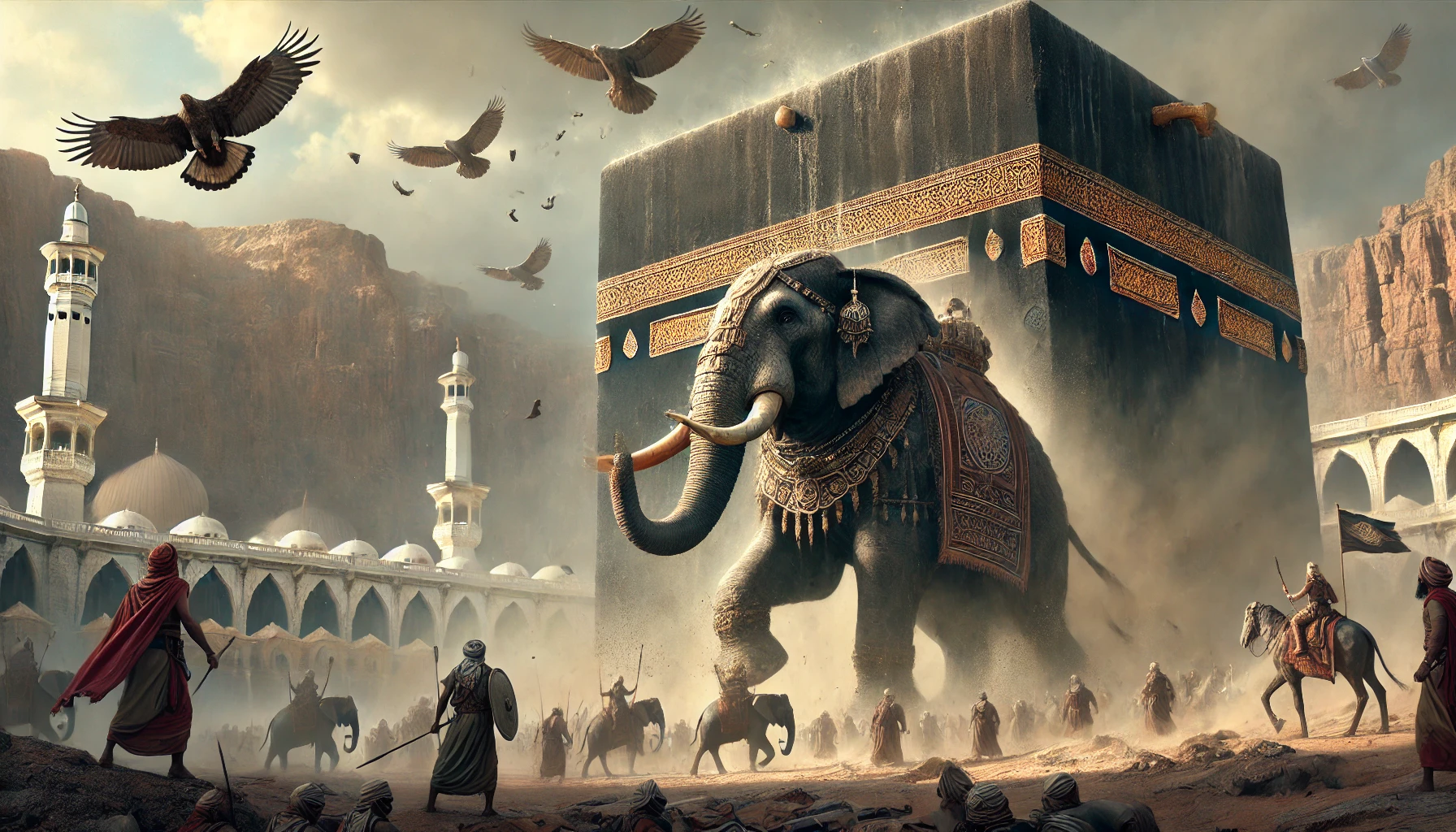
This Miracle is reported in the Quran as well as by arab historians , the event was known to the arabs that they gave the name “year of the elephant” to the year 570 , the same year where prophet Muhammad was born :
Abraha, the Abyssinian Christian ruler of Yemen, constructed a magnificent cathedral in Sana’a called Al-Qullays. His intention was to rival the Kaaba and attract Arab pilgrims to Yemen instead of Makkah. However, when he learned that an Arab had allegedly desecrated the cathedral, he became enraged and decided to march to Makkah to destroy the Kaaba.
Abraha assembled a large army, which included war elephants (one being particularly famous, called Mahmud). As the army advanced toward Makkah, various Arab tribes tried to resist but were defeated. When Abraha reached the outskirts of Makkah, he seized 200 camels belonging to Abd al-Muttalib, the grandfather of Prophet Muhammad(ﷺ).
The Quraysh were unable to resist Abraha’s army. Abd al-Muttalib, the leader of Makkah, met Abraha and only requested the return of his camels, saying: “I am the lord of the camels, but the Kaaba has its own Lord who will protect it.” This statement demonstrated his faith in Allah’s divine protection.
As Abraha’s army approached the Kaaba, Mahmud, the lead elephant, refused to move forward when directed toward Makkah but would move in other directions. Suddenly, flocks of birds (ababil) appeared, each carrying small stones of baked clay. These stones struck the soldiers, causing their flesh to rot and their bodies to disintegrate. Abraha himself was severely injured and fled back to Yemen, where he reportedly died a slow and painful death.
While the Incident of the Elephant is not a direct mu’jiza (prophetic miracle), it can be considered an indirect miracle for him :
- The destruction of Abraha’s army safeguarded the Kaaba, which later emerged as the spiritual center of Islam. Additionally, the protection of Makkah underscored its significance, not only for the Arabs but also for the future Islamic message that would be conveyed by Muhammad.
- The Prophet Muhammad(ﷺ) was born in the same year as this miraculous event, suggesting divine planning to protect the birthplace of the final messenger.
- Just as previous prophets had signs preceding their missions, this event foreshadowed Muhammad(ﷺ)’s prophetic role.
- When the Quran was revealed, this event was still well-known to the Quraysh. By recalling this event, the Quran reminded the Makkans that Allah had protected his Kaaba before, just as He would protect His Prophet now.
The Prophet’s MIRACLES RELATING TO THE INCREASE IN FOOD
There are many examples of this kind of miracle. They have all been transmitted through various channels, sometimes as many as sixteen. Most of them took place in the presence of large assemblies and were related by many people of truth and good repute.
Bread for 70 people
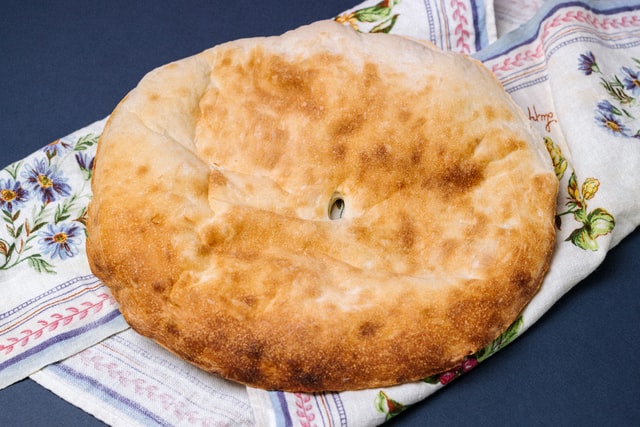
130 people For the liver of a sheep
THE PROPHET’S MIRACLES RELATED to WATER

There are many examples of the Prophet’s miracles concerning water. They have been reported by numerous companions and transmitted through various reliable channels.
Water gushed between the PProphet’sfingers for 90 men to perform their ablutions
A small pot of water for 1500 men
THE PROPHET’S MIRACLES WITH THE SICK AND WOUNDED
Many examples of this kind of miracle performed by the Messenger of God are recorded in the authentic books of tradition.
The healing of Ali’s eye before the battle of Kaybar
During the battle of Khaybar, ‘Ali ibn Abi Tālib (may Allah be pleased with him) had sore eyes. So, the Prophet (ﷺ) summoned him. He wiped his face and spat into his eyes so his eyes recovered by Allah’s permission. The Prophett (ﷺ) then gave him the standard, and Allah granted Muslims victory in conquering the fortress of Khaybar at the hands of ‘Ali. ‘Ali (may Allah be pleased with him) says that he never had sore eyes nor a headache after the Prophet(may Allah’s peace and blessings be upon him) had wiped his face and spat in his eyes during the battle of Khaybar. This is an evident miracle of the PProphet(ﷺ) :

